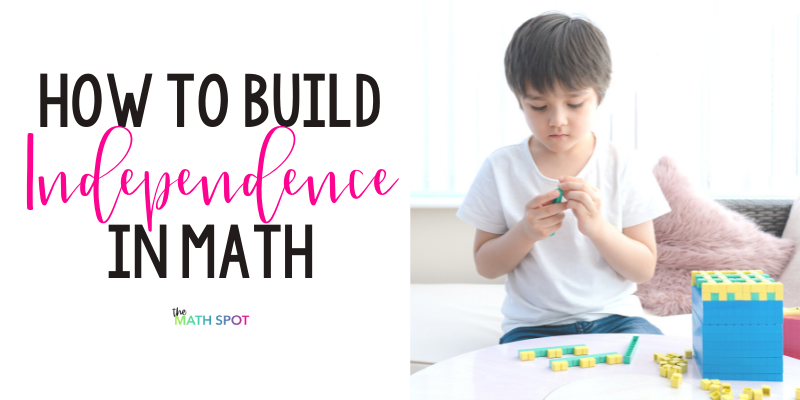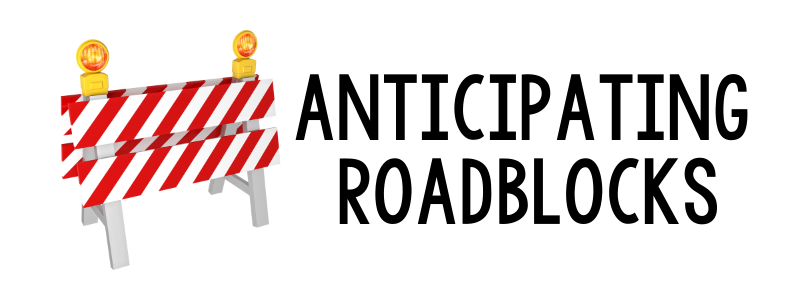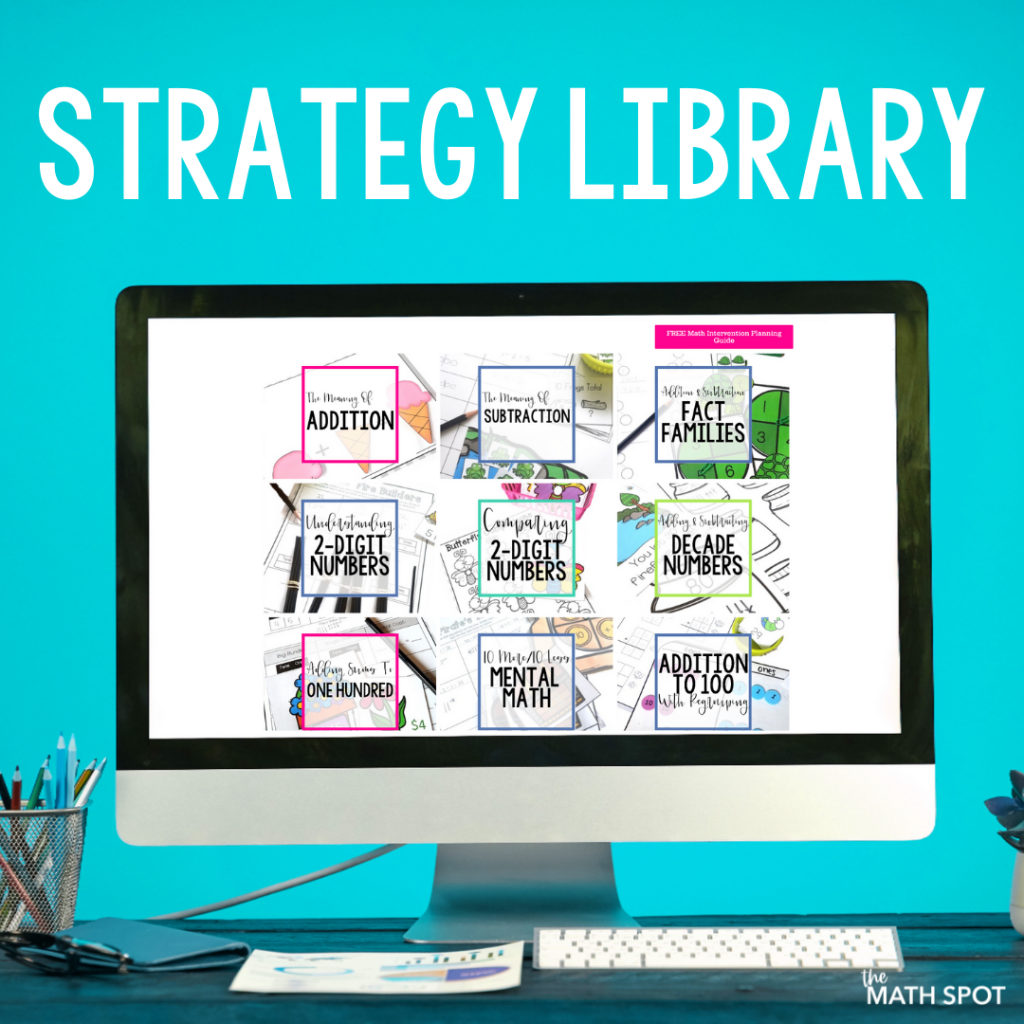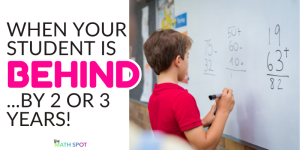This post contains affiliate links. This means that when you make a purchase, at no additional cost to you, I will earn a small commission.
Have you ever sat at a small group table watching a student succeed only to find them floundering when it came to an assessment on the exact same topic? Your instinct might be to spend more time with that student — but how when you are already spread so thin?
More time with that student might be helpful, but in that time being mindful of purposely building independence will get you farther!

What Does Independence Look Like?
Independence in math class simply means that your students are able to work, explore, develop and demonstrate their understanding of math concepts independent of the teacher.
Independence does NOT (only) mean that your students are able to complete independent practice activities without you.
So often, with students who need the most support, the instinct is to hold their hand so that they can be as successful as possible in the moment. Truly? This does a disservice in the long run! We create students who are dependent on the constant support of the teacher in order to be successful.
5 Steps to Building Independence in Math Class
- Building independence in your students means knowing them well. What can they do related to the topic you are exploring?
- What is the next step or next understanding you would like your students to have related to that topic?
- How can you build an activity that will help to illuminate this understanding or skill for your students?
- What will it look like to explore this topic in a teacher led (small group or whole group) setting?
- What will it look like for your students to practice and apply this new understanding independently?

What Roadblocks Can We Anticipate?
If you can predict it, you can prevent it! Let’s consider the roadblocks to independence related to the 5 steps above.
- If you don’t know your students’ current level of understanding you risk providing them with an independent activity that is well beyond their current knowledge. This will lead to frustration, off task behaviors and a feeling that “independent work time doesn’t work” in your classroom. Get in front of this roadblock by consulting your pre-assessment data ahead of a unit. Are there prerequisite skills that your students are missing? Start there!
- When you are thinking about the next step you want your student to take, think small! If you are working on the skill of adding decade numbers with your students and your students are already able to count by 10s the next step might be adding decade numbers with base ten blocks. Scaffolds and hands-on materials help to make a BIG skill seem small and manageable for your students.
- Think about that very small skill you want to build in your students and make it engaging! Adding decade numbers? Think about a context in which this might happen to bring engagement and interest to your lesson. Maybe your students are into video games, imagine a scenario in which they are collecting tokens worth 10 points each- can they use base ten blocks to calculate their score as they move along the game board?
- Before you release your students to practice independently think about what you want this to look like in a group setting first. Continuing the previous example, if you are working through a video game context, think about how you can release your students ownership of this skill throughout the activity. Perhaps initially you are working as a group to collaboratively build with base ten blocks to add decade numbers. Knowing you want to work towards independent practice, you might considering moving towards a “think pair share” format throughout the activity so that your students will be able to flex their independence muscles before being released to work on their own.
- When you move to independence, don’t be quick to eliminate supports you initially put in place during your group lesson. If your students were using base ten blocks in the group lessons, provide this same material during independent practice! If your students were modeling problems but not yet recording equations during the group lessons, don’t add in this new element that increases the level of difficulty during independent practice.
Let’s Practice!
Have you visited the strategy library yet? If not, you’ll love it! Click on the math skill you are currently building with your students. For each skill you will find a set of 5 activities that build students’ understanding of that skill.
Go to the strategy library now and choose a skill you are teaching. Look at the 5 steps and ask yourself “What might it look like to use this activity in a group setting? What could it look like to provide independent practice using the exact same activity as a base?”
The more you practice teaching with the goal of moving towards independent practice the more comfortable this process will be and the more independence you will see in your students!
Related Resources
Did you know that all 5 Day Focus units include pre and post assessment, 5 small group lessons and daily independent practice? Printable units are under $10 and include everything you need to help your students succeed in the small group setting!
Favorite units include:
1) Partners of 10
2) Fact Families
3) Understanding 2-Digit Place Value
4) Understanding 3-Digit Place Value
5) Subtraction with Regrouping
6) Patterns in Multiplication





